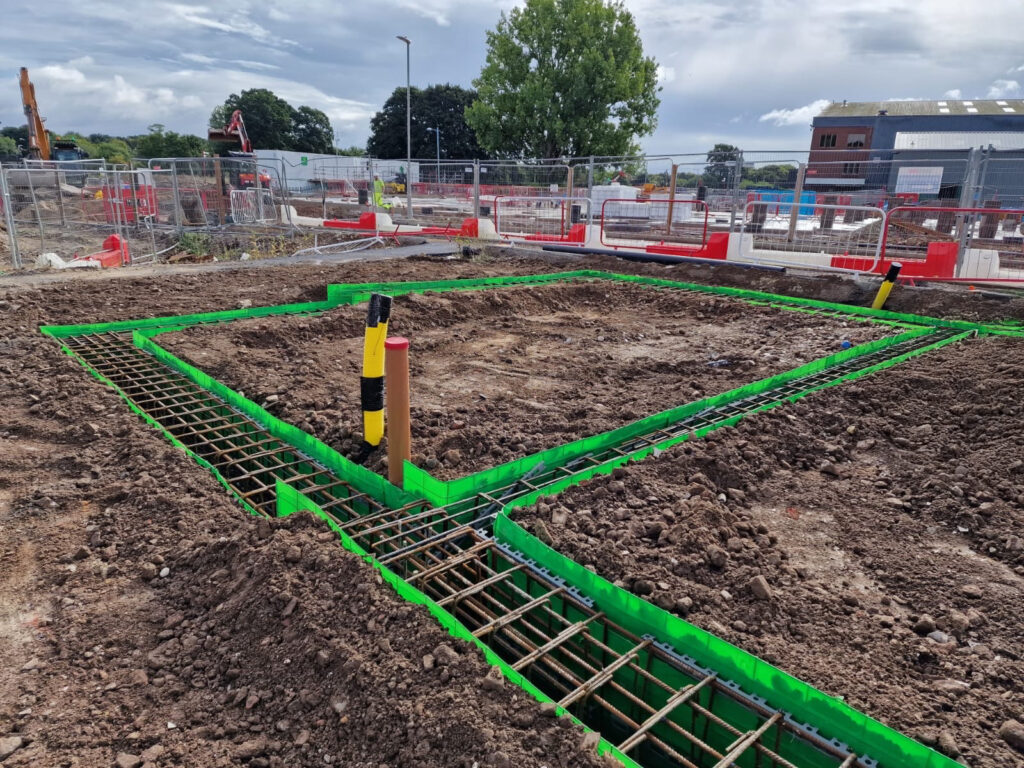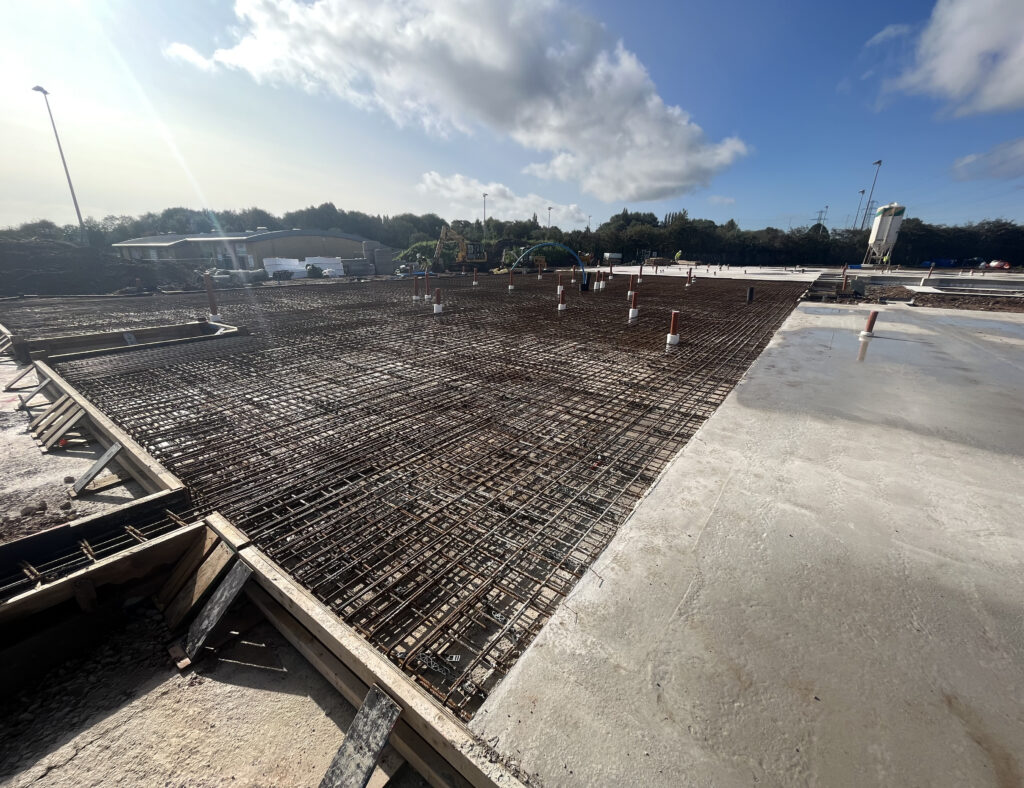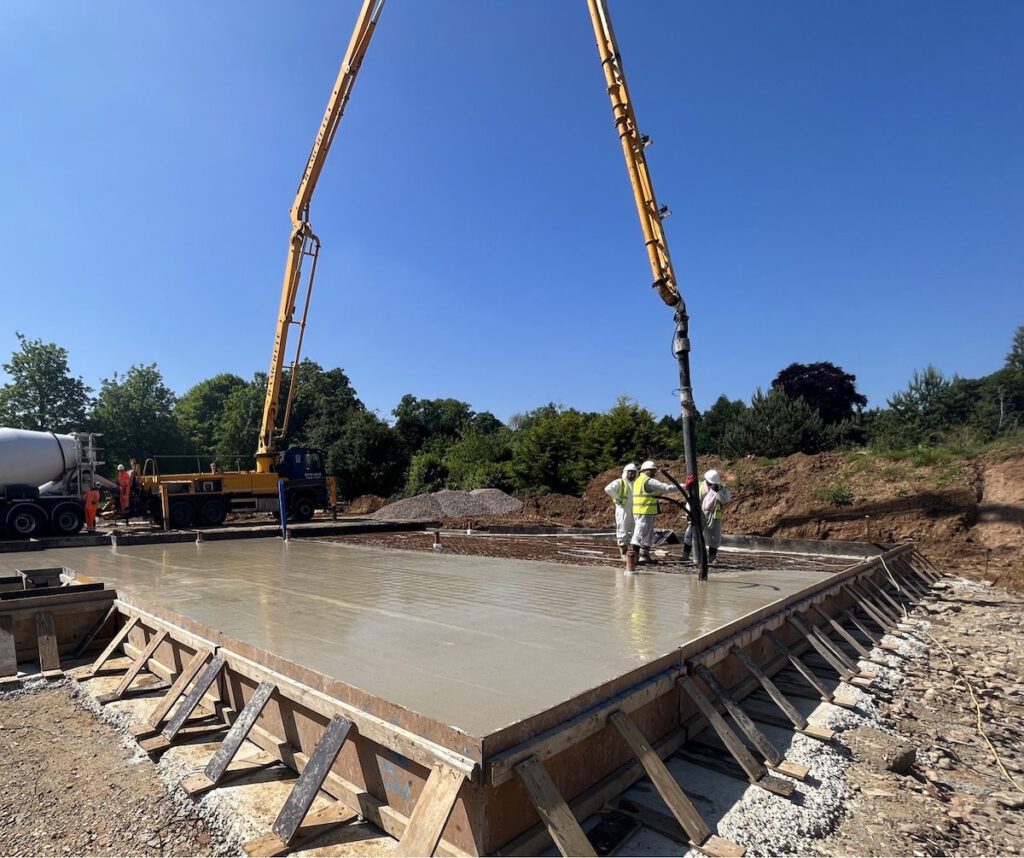What is a high water table?
A high water table occurs when the level of groundwater rises to or near the surface, saturating the upper soil layers. This situation arises due to excessive water accumulation beneath the ground, often from heavy rainfall or water seeping down from higher elevations into the surrounding soil.
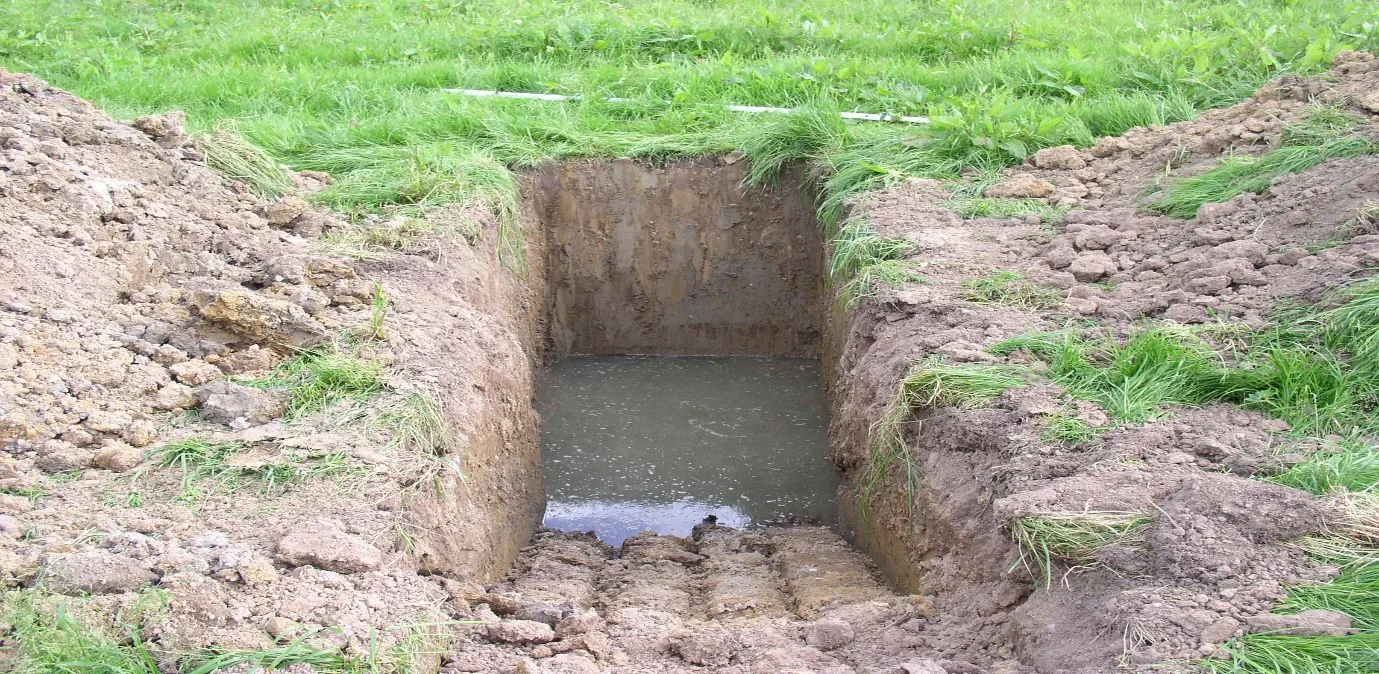
Where do you find a high water table?
High water tables are particularly common in low-lying areas with poor soil drainage. However, they can also happen in other regions, especially during periods of heavy rain or severe flooding. Recognising that a high water table is present is crucial to understanding its potential impacts on new development. By identifying the signs and causes, you can take preventative measures to protect your project from water-related issues.
How do you know if a high water table is present?
Your ground investigation should identify the groundwater level. Both boreholes and trial pits can be used to determine the depth of groundwater. However, in some cases, the true groundwater level will not be immediately apparent during the investigation. In high permeability soils such as sands and gravels, groundwater will fill an excavation quickly so may be easily visible. In lower permeability soils such as clays, this can take longer. However, water often has to be added to boreholes when drilling in sands and gravels, and this can mask the groundwater observations.
Longer-term monitoring in boreholes is the best way to understand the true groundwater level. This involves the installation of standpipes within completed boreholes which can then be inspected on return visits to the site to check the groundwater level, once it has had a chance to stabilise. Several return visits are ideally required to ensure that any potential variability is captured.
It is also important to consider that groundwater levels can fluctuate very greatly with the seasons, as heavy winter rainfall percolates into the soil.
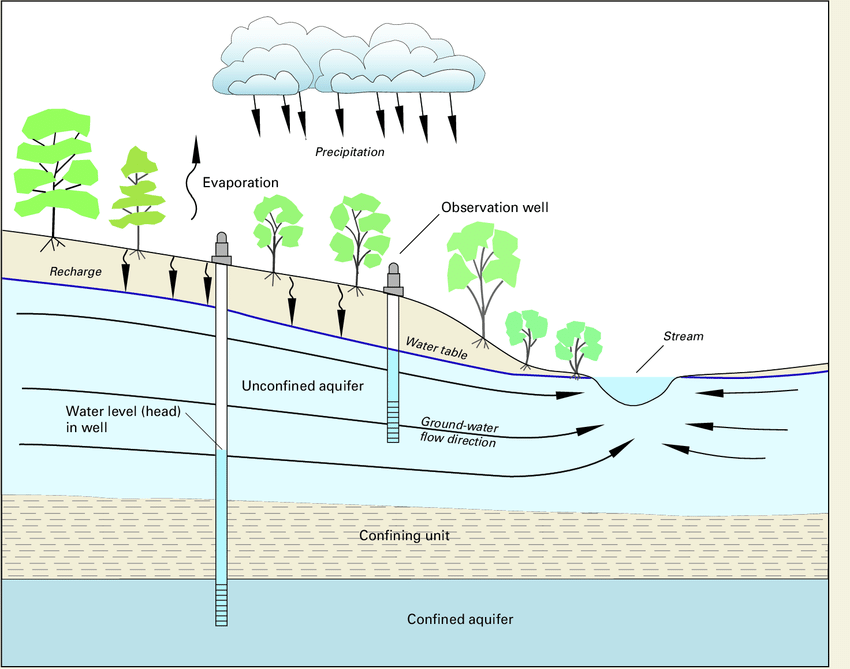
What is the best solution to deal with a high water table?
A piled raft foundation effectively addresses the challenges posed by a high water table, ensuring the stability and integrity of structures built on such sites. Here’s how it works:
No requirement for excavation
Many buildings, particularly houses, are built on shallow foundations. These typically involve concrete strips or pads, that are constructed by excavating below ground level and filling with concrete to form a stable foundation. If shallow groundwater is present, within the depth of the foundation excavation, this greatly complicates the construction. The excavations will fill with water and in some cases the flow of water into the excavation can destabilise the sides.
Foundation excavations on sites with shallow groundwater will therefore require de-watering by the use of pumping, and also possibly the use of shoring supports. These additional activities greatly increase the time and costs associated with shallow foundations. A piled raft foundation does not require excavation below ground level (other than a standard site strip, and any earthworks necessary to adjust levels as required for the development), removing all of these complications.
Minimised Settlement
In areas with high water tables, soil can often be softer and more prone to settlement. This is not always the case but can be an associated issue. Piles constructed deep into the ground bypass these softer layers, finding the structure on more stable strata. This reduces total and differential settlement and maintains the building’s structural integrity, even in waterlogged conditions.
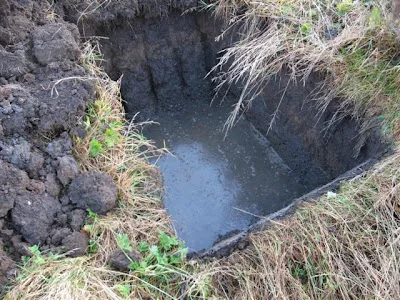
Trial pit for high water table
Utilising a Piled Raft foundation for a high water table
If a high water table is present, the use of Continuous Flight Auger (CFA) or driven piles are recommended, as both of these piling techniques are an effective solution for building on sites with high water tables. By removing the requirement for excavation below ground, significant time and cost savings can be achieved. A piled raft also offers a much more efficient foundation solution in soft ground, therefore this foundation type ensures the structure remains secure and stable, minimising the risks associated with high groundwater levels.

